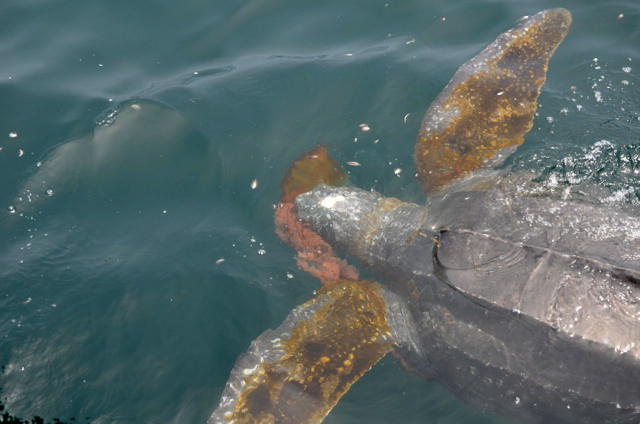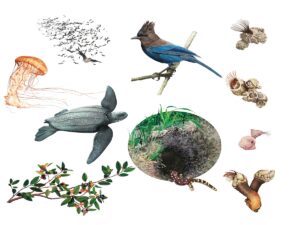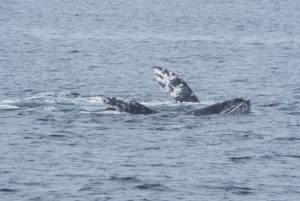Why does the western population of Pacific leatherback turtles migrate from Indonesia (where they breed) to the California coast to feed on jellyfish, although this food source is also plentiful in the south Pacific?
The simple answer to this question, from BN reader Marie Winslow, relates to ocean currents—but like so many things in nature, the story is more complex. To get the full answer, Bay Nature turned to NOAA marine ecologist Scott Benson.
“I originally thought the answer was tied to the quantity and quality of prey (jellyfish) in coastal California waters,” Benson said. “Prey likely plays a role in keeping the leatherbacks coming back to California, but I couldn’t understand how a turtle would find this prey resource in the first place, or why all the turtles wouldn’t use something closer to the nesting beach.
Often in science, before you can answer one question—you need to ask several more. For Benson, this began with asking the question: Would a turtle that foraged in one region prior to nesting, use the same region again after nesting?
“I’ve caught the same turtle years apart in California waters, so I suspected foraging site fidelity, similar to nesting site fidelity [female leatherbacks return to the same beach where they were hatched to lay their own eggs].”
Using stable marine isotopes (nitrogen and carbon) obtained from small tissue samples of nesting females, researchers confirmed Benson’s suspicion. They found that 12 out of 13 turtles sampled returned to the same foraging region they had used prior to nesting.
The second question they sought to answer was: What percentage of turtles nesting in Indonesia make the long crossing to forage in the eastern north Pacific (from Alaska down to California)? Based on nitrogen composition in the tissue samples, the study found that 50- 60 percent of turtles sampled at the Jamursba-Medi nesting area in Indonesia are using the eastern north Pacific as a foraging ground.
“These studies were big breakthroughs in our understanding of this population,” Benson said. “But the question of how the migration happened in the first place remained unanswered.”
Collaborating with French researcher Philippe Gaspar, scientists used a drift model to simulate hatchling dispersal and found a correlation between the dispersal and adult movements. As a result, Gaspar proposed the ‘learned migration’ hypothesis which goes something like this: Hatchlings are weak swimmers and when they leave the beach, most will be advected (or transported) by strong ocean currents. Those who are lucky enough to survive this journey and find food without becoming food themselves are able to grow until they are reproductively mature. Eventually, these individuals will make their way back to the nesting beach where they were born, but will remember where they successfully foraged. After nesting, it is most likely they will return to that same foraging ground.
“So, we now believe that the migration patterns are selected via effects of ocean currents on hatchlings,” Benson said. “And those turtles that survive ‘remember’ their foraging place.”
What Bay Area nature question has been itching you? Ask the Naturalist!
Alessandra Bergamin is the Bay Nature Interim Online Editor.





